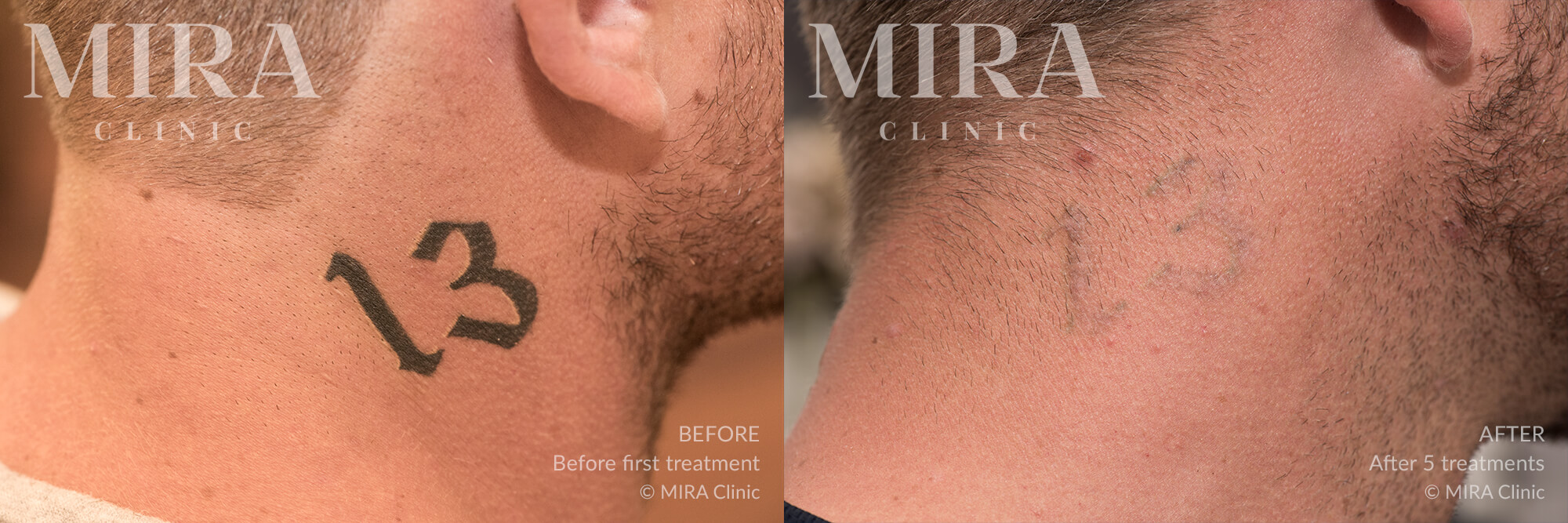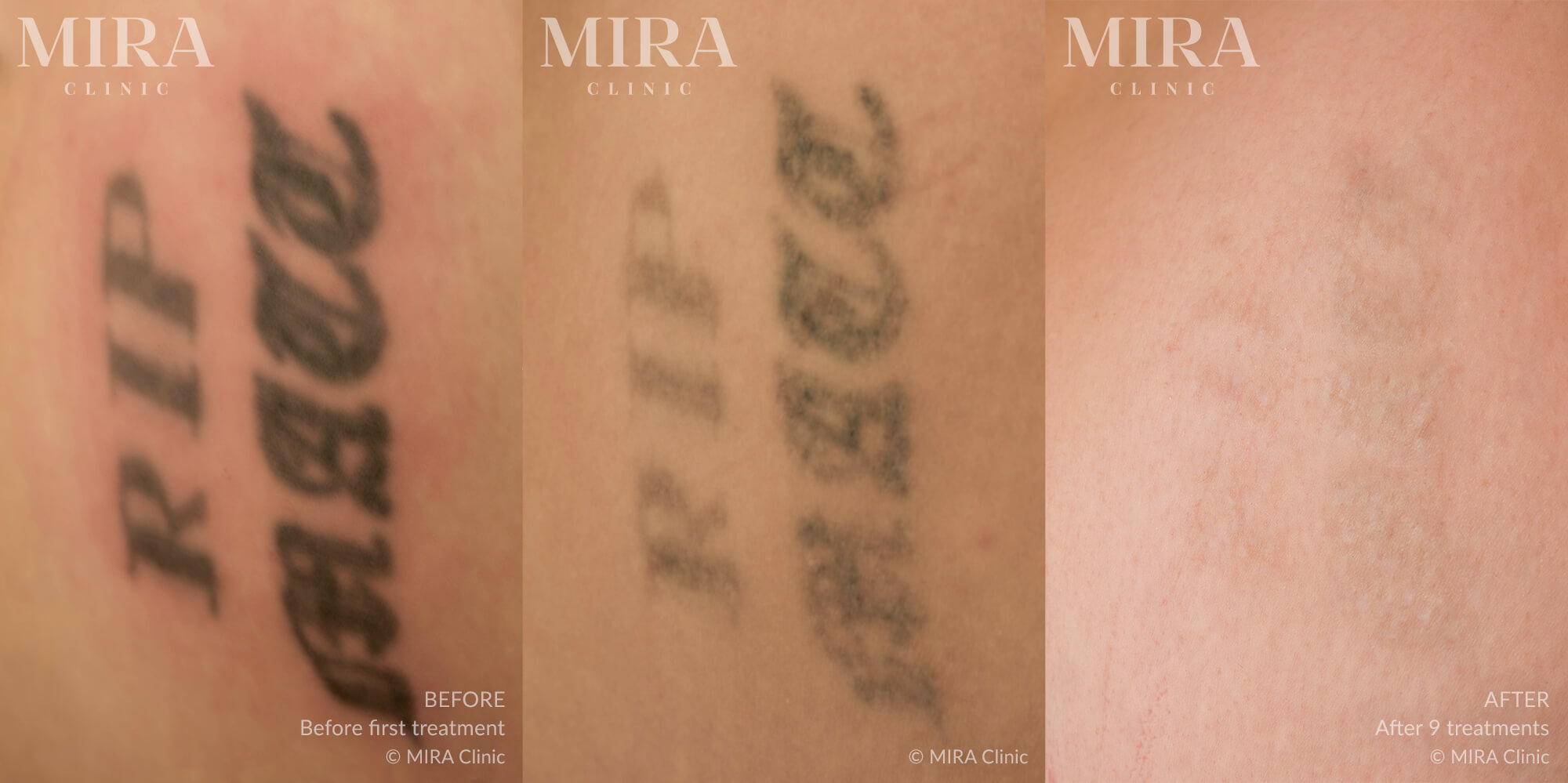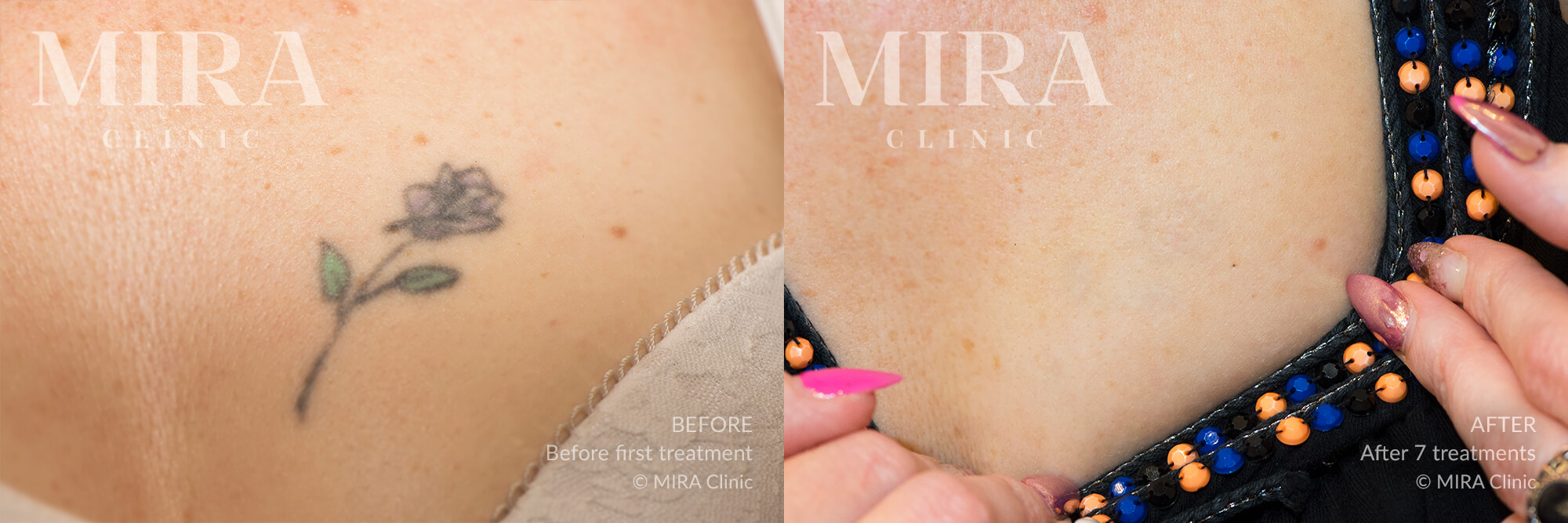Just as the popularity of inked skin is increasing, so is the practice of laser tattoo removal.
Many people get their first tattoos in their teens, then life changes and they become parents, they become more advanced in their careers and they often feel the tattoo is no longer representative of who they are or who they want to be. Sometimes changing a tattoo can be as simple as a change of fashion — tattoos from 10 or 20 years ago may not be so fashionable or so relevant today and might have a stigma associated with it.Dr Andrew Clark recently sat down with “The West Australian” newspaper to discuss laser tattoo reduction click below to read the article in full.

Tattoos are meant to last forever, but sometimes it would be good if they didn’t! Whether you wish to erase a mistake or fade a tattoo to make way for better artwork, laser tattoo reduction may be the solution you are looking for.
At MIRA Clinic we have a medical class Laser called the “Enlighten 3” manufactured by Cutera. This is a Class 4 laser and in Western Australia this type of Laser can only be operated by a Laser qualified medical doctor or registered nurse in a Laser licensed premises. You can read reviews from clients who have had treatments with the Enlighten Laser here.
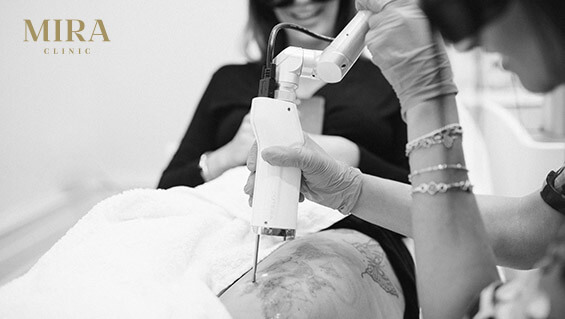
The laser sends a very short powerful beam of laser light through your skin and into your tattoo which causes the ink particles in the tattoo to be broken up into smaller particles. Each Laser pulse works on a few millimetres of your tattoo, so multiple pulses are needed to cover your tattoo. When the ink particles become small enough, cells in your body called macrophages are able to swallow the particles and these are slowly transported and excreted through your lymphatic system.
At your first laser tattoo reductionconsultation, we undertake to give you the best advice that we can based upon our extensive experience using this equipment. All clients are offered a no-obligation consultation to learn more about the treatment process and the expected outcomes. If you decide to go ahead with laser tattoo reduction treatment it is usually possible to do so during the same appointment as the consultation (depending on the size of your tattoo).
Contoured Neckline
Improvement may not be seen in the tattoo or lesion for up to six weeks after a tattoo reduction treatment. These laser treatments should normally be repeated at six-week intervals. Continued improvement can occur for several months after the treatment.
The goal and purpose of the tattoo reduction procedure is to attempt removal of the tattoo, or to make the pattern as unrecognisable as possible by lightening the pigment.
Improvement may not be seen in the tattoo or lesion for up to six weeks after a treatment. These Laser treatments should normally be repeated at six-week intervals. Continued improvement can occur for several months after treatment. The goal and purpose of the procedure is to attempt removal of the tattoo, or to make the pattern as unrecognisable as possible by lightening the pigment.
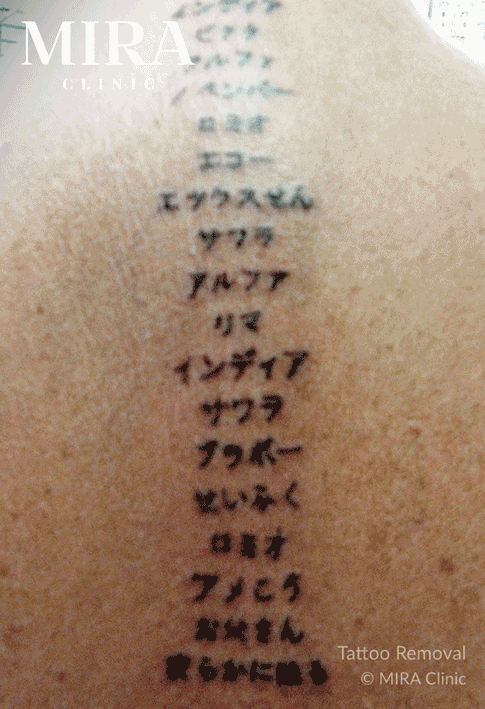
In some cases, laser tattoo reduction treatment fails to remove all pigment, especially from professionally applied tattoos or deep amateur tattoos. This particular Laser is effective on nearly all pigment colours including black, red, yellow, blue, green and purple.
Multiple tattoo reduction treatments are generally required, and we are unable to warranty any particular result, and we are unable to offer any form of refund even if your results are not to an extent that you were hoping for. Nor can we offer any refund if you experience any form of side-effect.
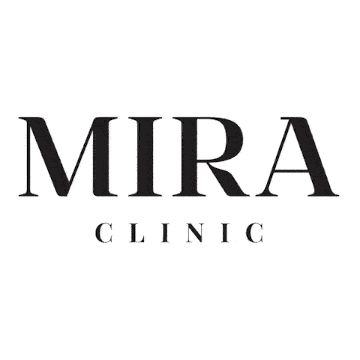
Compliance with the aftercare guidelines is crucial for healing, prevention of scarring, and prevention of hyper-pigmentation. Tattoo reduction aftercare guidelines include avoiding the sun for 2 months after each procedure. If it is necessary to be in the sun, a sunscreen with SPF 25 or greater must be used. Occasionally, tattoo reduction treatments will result in blistering or scab formation and will require care with dressings and anti-bacterial ointments while they are healing. Full details of how to care these outcomes are given to you at the time of your tattoo reduction consultation.

